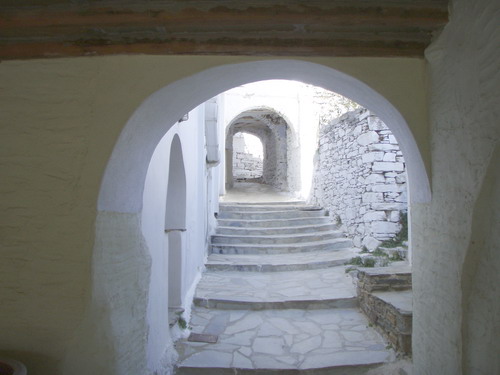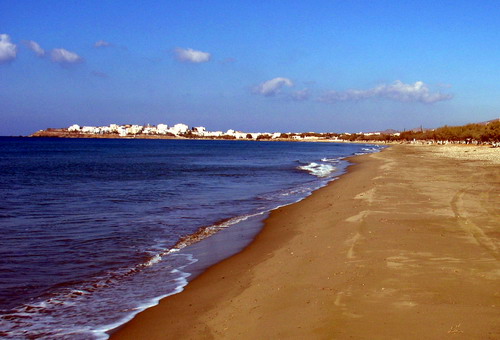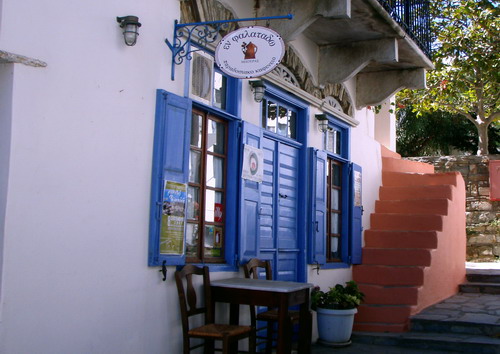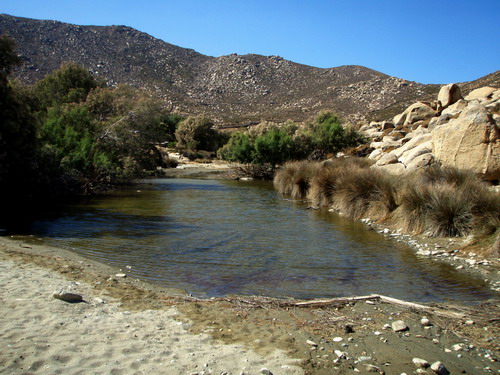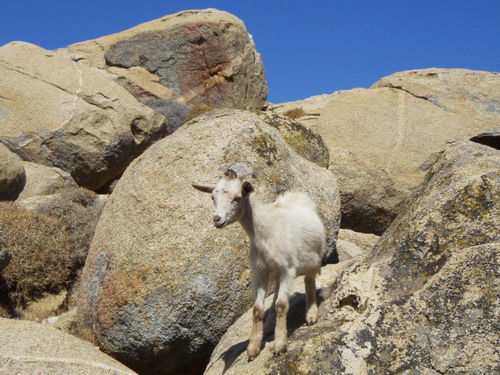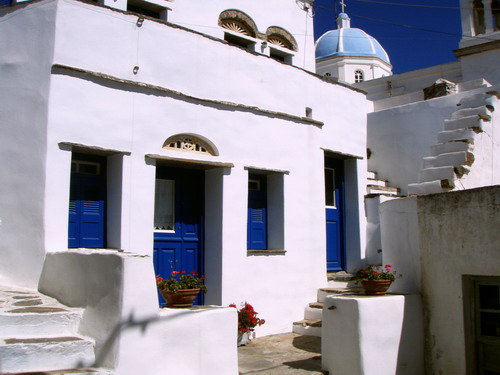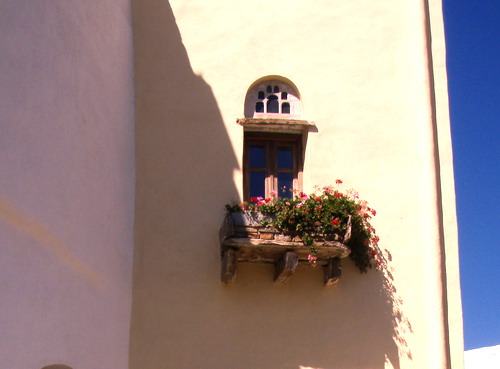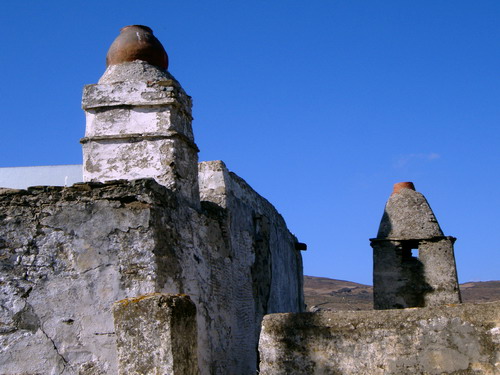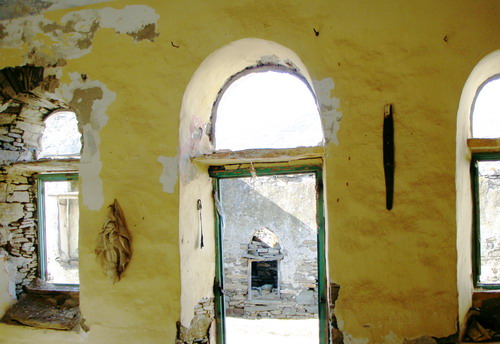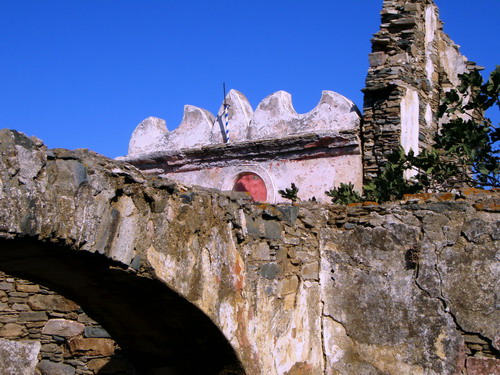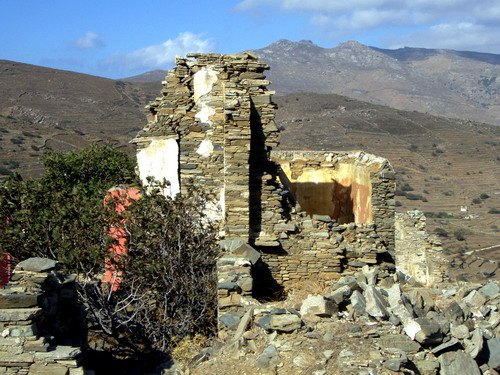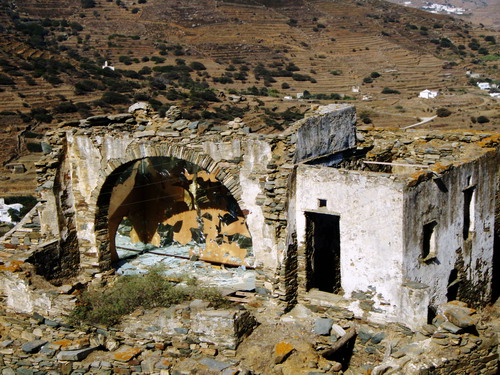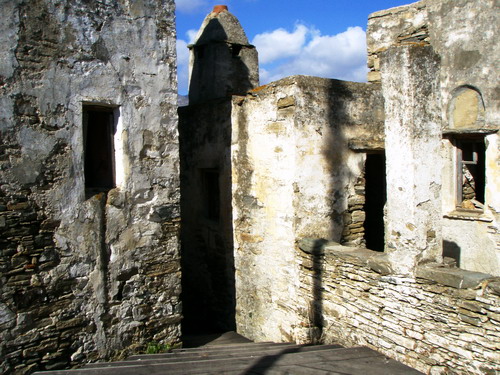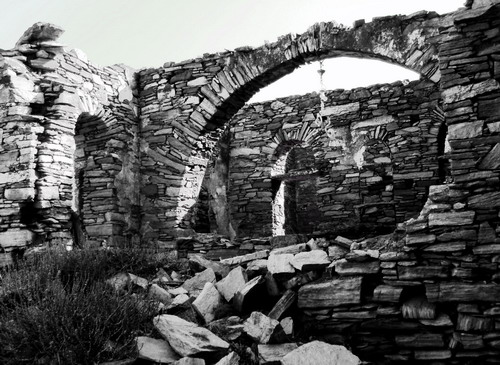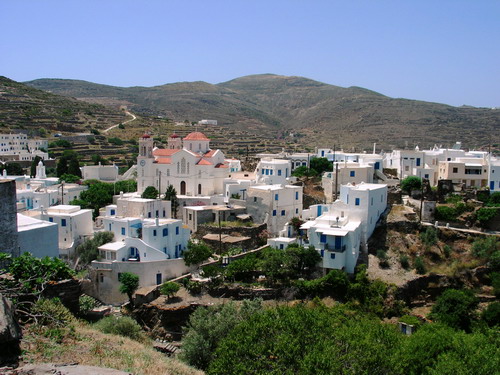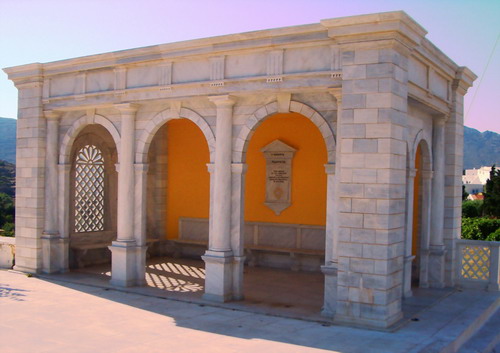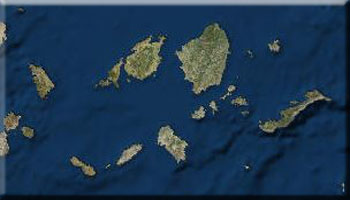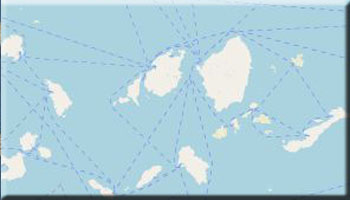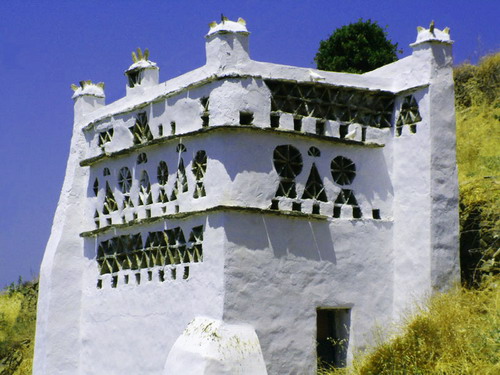 PIGEON HOUSE
PIGEON HOUSE
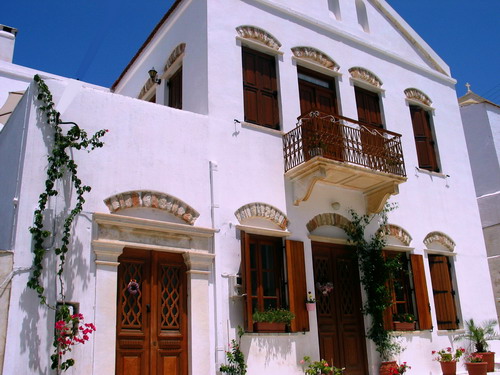 HOUSE IN TOWER
HOUSE IN TOWER
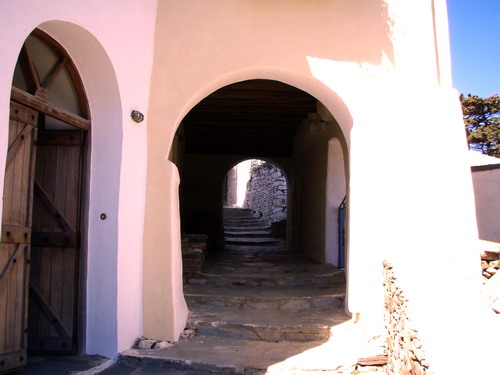 FALATADOS
FALATADOS
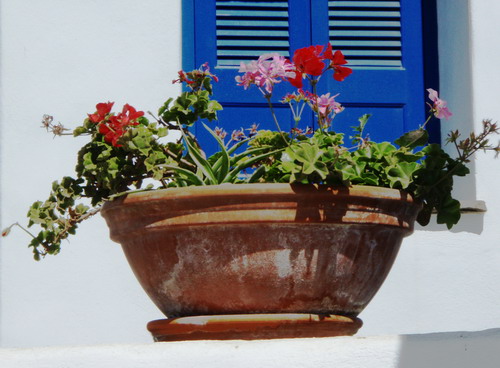 FLOWERS
FLOWERS
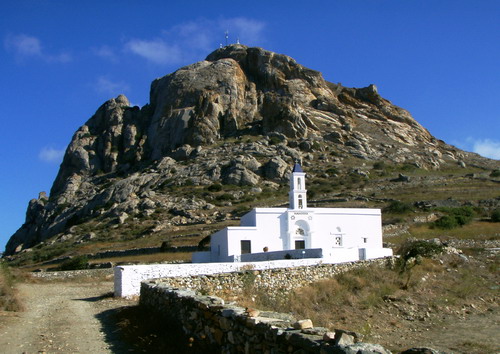 EXOMVOURGO
EXOMVOURGO
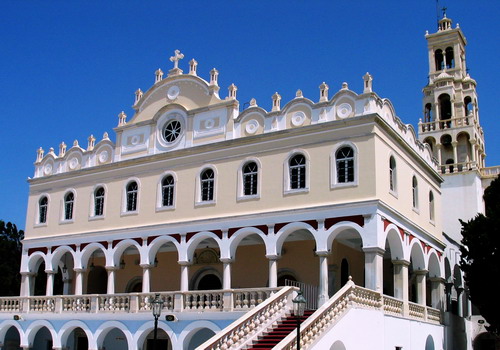 PANAGIA MEGALOCHARI
PANAGIA MEGALOCHARI
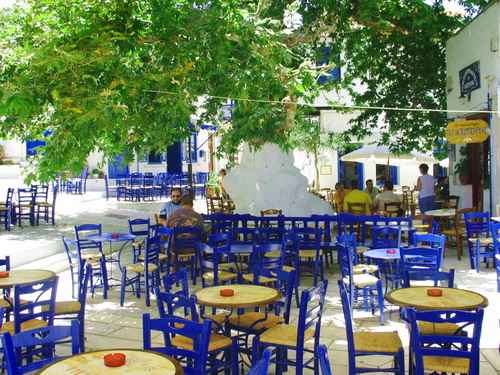 PYRGOU SQUARE
PYRGOU SQUARE
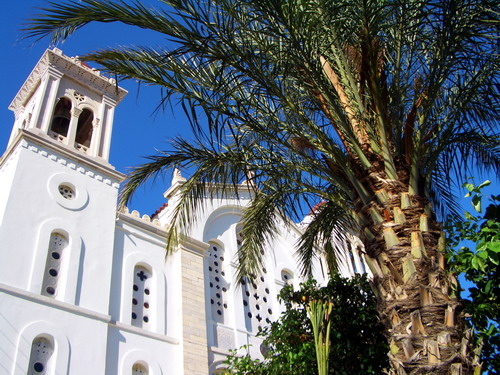 CHURCH - PIRGOS
CHURCH - PIRGOS
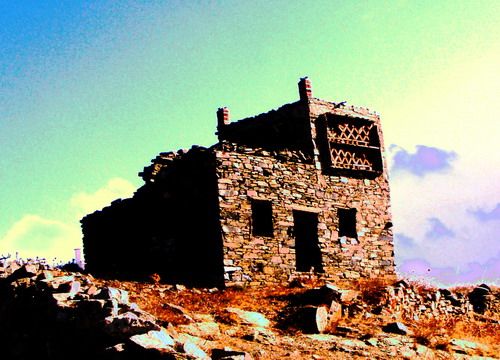 PIGEON HOUSE - MONASTIRIA
PIGEON HOUSE - MONASTIRIA
Tinos is the third largest island of the Cyclades, after Andros and Naxos. Part of the northern Cyclades, it lies southeast of Andros and northwest of Mykonos and covers an area of 197 square kilometers. Tinos has a population of 9,701. The island is comprised of two Municipalities and one Township or community totaling 52 settlements.
The Municipality of Tinos comprises Poli and the traditional villages of Mountados, Karya, Berdemiaros, Triantaros, Dyo Horia, Arnados, Moni Kehrovouniou and the coastal settlements at Skylantar, Ayios Sostis, Ayios Ioannis Porto and Lyhnaftia.
The Municipality of Exombourgo consists of the traditional settlements Xynara,Loutra, Krokos, Sklavohorio, Agapi, Perastra, Komi, Kato Kleisma, Karkado, Aetofolia, Kalloni, Kardiani, Ysternia, Smardakito, Tarambado, Kampo, Hatzirado, Ktikado, Tripotamos, Sberado, Tzado, Kehro, Mesi, Steni, Falatado, Kathlikaro, Myrsini, and Potamia as well as the coastal settlements of Ysternia, Vathi, Kardiani (Yannakis), Ayios Romanos, and Kolimbithra.
The Panormos township includes the traditional settlements of Pyrgos,Plateia, Venardados, Marla, Mamados and the coastal settlement of Panormos.
Tsiknias, the island's highest peak, is on the island's eastern end and rises to 726 meters. Tinos's hallmark is the dovecotes scattered around the island and 1,200 churches and chapels.
The main economic activities are agriculture, maritime activities, fishing, and tourism - the economy's mainstay, which peaks in summer. Tinos is linked by boat to the mainland ports of Piraeus and Rafina.
Tinos’s name derives from the Phoenician Tannoti or snake, and it was also known as Ofioussa (filled with snakes). Local tradition holds that the snakes were killed by the island’s patron, Poseidon.
Tinos was first inhabited by the Pelasgians, and later settled by the Ionians, Athenians, Macedonians, Ptolemies, and Romans. The earliest human settlements date from the Neolithic era and there is evidence of habitation in the Geometric and Archaic periods.
In 480 B.C., just before the Battle of Salamis, the Tinos trireme of Panaitios joined the Greek fleet and its crew transmitted information about the naval battle against the Persians. The island’s name is inscribed on a tripod votive at the Oracle of Delphi.
Under Byzantine rule, the island was the target of Saracen raids. In 1204, after the fall of Constantinople, it came under Venetian dominion and was initially ruled by the Gyzi dynasty (1207-1390) and was subsequently under the administration of the Republic of San Marco until 1715. The Venetians played a substantive role in shaping the island’s social and cultural traditions. Under Venice, the island served as a refugee for persecuted Greeks, offering stability and relative security, while the Venetian influence can be seen in a distinct form of feudalism that evolved on the island.
In 1715, the island fell to the Turks but their presence and influence was minimal. Tinos used this benevolent rule to grow. Virtually self-administered during the period, the island developed its trade and crafts industry and effectively emerged as the financial capital of the Cyclades. Thanks to its strong economy, it was dubbed “Little Paris” as the arts, especially marble sculpting, flourished. These crafts remain part of the island’s cultural and economic heritage to this date.
Russian rule, though brief (1770-1774), had a more lasting influence which can be seen in the architecture of the island’s churches. Milestones in the island’s history include: March 31, 1821, when the banner of the Greek revolution was raised on the island; January 30, 1823, when a vision by Ayia Pelayia, a local nun, led to the discover of the icon of the Virgin that is believed to possess miraculous powers.
On 15 August of 1940, the Italian sink the Greek destroyer "Elli" in the harbor on the feast of the Dormition of the Virgin. The discovery of the icon of the Virgin gradually established Tinos as an important center of the Orthodox faith.
Worth visiting are:
-
The Church of the Panayia, one of the most important Orthodox churches in Greece. The church houses a galley and there is a weaving workshop within its grounds.
-
The TaxiarchesChurch.
-
The Catholic Church of Ayios Nikolaos.
-
Malamatenia Church.
-
The village of Pyrgos.
-
The School of Fine Arts at Panormos.
-
The Church of Ayia Ekaterini at Kampos.
-
The granite boulders at Volax and Voliaka.
-
The archaeological site at Kionia, including the ruins of a temple dedicated to Poseidon.
-
The village of Mountados.
-
The Analipsis Christou Church at Arnado.
-
The Church of Ayia Triada at Falatado.
-
The Timios Stavros Church at Ktikado.
-
The Panayia Rodarion at Xynara.
-
The "Despot's Palace", a Center for Faith and Culture, at Xynara.
-
The village of Ysternia where most marble sculptors reside.
-
The village of Kardiani.
-
The Parish Churches of the Genethlia Theotokou and Ayii Anaryiri at Plateia and Marla.
-
There are more than 600 dovecotes around the island and most date from the 18th and 19th centuries. Many are clustered in the central and eastern parts of the island, especially in the Tarabados valley.
Museums:
-
The Archaeological Museum.
- The Tsoclis Museum, at Kampos village.
-
The Museum of Tinos Artists, whose collection comprises original works and replicas of paintings by locally-born artists who gained national and international prominence.
-
The Antonis Sohos Museum with its collection of wood and clay carvings by the Tinian scholar.
-
The Collection of Religious Relics, including 18th- and 19th-century icons as well as the Charter of Rigas Feraios and a ring worn by the revolutionary leader Theodoros Kolokotronis.
-
The Picture Gallery, located at the Evaggelistria Church.
-
The Museum of the Moni Kehrovouniou which houses a collection of 18th- and 19th-century icons and handicrafts by the convent's nuns.
-
The Arnados Church Museum with its collection of old icons, church relics, and old books.
-
The Ethnographic Museum at Ursuline Convent at Loutra.
- The Ethnographic Museum at Jesuit Monastery at Loutra.
-
The Karya Ethnographic Museum.
-
The Relics Repository with its collection of church vessels.
Orthodox Monasteries:
-
Iera Moni Theotokou at Kehrovouni.
-
Iera Moni Ayias Triadas at Yirla in Hora.
-
Iera Moni Kyra Xenis at Panormos.
-
Iera Moni Katapolianis at Ysternia.
-
Iera Moni Vourniotissas at Agapi.
-
Pigrimmage of Eleoussa at Exombourgo.
-
Pigrimmage of Faneromeni at Tsiknia.
-
Pigrimmage of Ayia Varvara at Smovolo.
-
The 10th-century Monastery of Kyria Angelon.
Catholic Monasteries:
-
Jesuit Monastery at Loutra.
-
Ursuline Convent at Loutra.
-
Franciscan Monastery at Mesi.
-
Pigrimmage of Panayia Vrisiou at Ayios Romanos.
-
Pigrimmage of Ieri Kardia Isou at Exombourgo.
Ayios Ioannis Porto Ayios Pandeleimonas Ayia Kyriaki Pahia Ammos Ayios Sostis Santa Margarita Ayios Fokas Ayios Dimitrios Kionia Apothikes Ayios Petros Volia Kolimbithra Ayia Thalassa Lyhnaftia Yiannaki Mali Kalyvia Yiannaki Bay Aspros Yialos Aggali Apigania Ysternia Ayios Romanos Panormos Panoussa Ayia Thalassa Vorni Kavoulourko Stavros Rohari Ayios Markos Livada
Tinos preserves the traditional flavor of island life which is transmitted through the paniyiri and the custom of opening homes to visitors and strangers.
The most popular such folk feasts are held on the feasts of:
- Vourniotissa on September 24
- Ayia Varvara at Smovolos on December 4
- Tripotamos on Christmas Day
- Ktikado on Easter Monday
- Lakotiani at Ysternia on the Feast of Thomas
- Panayia at Vrissi on the first Sunday of May
- Ayia Paraskevi at Karaboussa on July 26
- Kyra Xeni on August 23
Important Local Celebrations:
- Discovery of the icon of the Virgin (January 30): One of the most important feast days on Tinos, the observance begins with an evening mass on the eve of the feast day at the Evreseos church where the icon is taken for the service. On the feast itself, services in the main church are followed by the laying of a wreath at the bust of Bishop Gavril. In the afternoon, precisely at 2:30 pm when it was uncovered, the icon is led in procession along the same route taken by those who found it. After the icon is returned to its church, memorial services are held over the graves of those who uncovered the icon, followed by a review of the foundation's activities during the previous year. The celebrations draw to a close in the evening when a candle - lit procession by local students is followed by a reception hosted by the mayor.
- Panayia Megalohari (February 1-2): Two - day celebration that includes religious and social activities in honor of the Virgin and Ayios Symeon held at Ktikados.
- Evangelismos (March 25): Church services and processions at the Ieros Naos Evangelistrias mark the feast of the Annunciation, which coincides with Greek Independence Day. The latter is celebrated after services and a noon icon procession with folk dance exhibitions and food along the harbor.
- May 1: Labor Day is observed at Sklavohorio with the roasting of lambs on a spit. The meal is followed by music and dancing. The celebration is organized by locals, who later contribute food, sweets, and drink to the communal feast.
- Panayia Vrysiotissa (1st Sunday of May): An open air service is held at the pilgrimage after the icon has been led, in procession, from Tarabados. Services are followed by the blessing of vehicles parked alongside the road.
- Naos tis Myrsinis (2nd Sunday of May): The feast of the Church of Myrsini is observed with church services, followed by the opening of all village homes to visitors.
- Paniyiri of Ayia Pelayia (July 23): An impressive celebration that includes the transfer of the icon of the Virgin to the Kehrovouni Monastery for a vigil on the eve of the feast. At night, the icon is returned in procession to the church - about 8 kilometers away.
- Dormition of the Virgin (August 15): Observances begin on the eve of the feast with an evening service. Commemorations begin with church services following by a procession of the icon, usually observed by senior government officials and a navy contingent and accompanied by marching bands. On the afternoon of August 14, there is an official wreath-laying ceremony by the Navy Chief of Staff at the mausoleum of the Elli; on the morning of August 15, the wreath is cast to sea.
- Raising of the Cross (September 14): The feast is observed at the Catholic parish church in Ktikado and the chapel in the Old Harbor.
Customs:
- "Kavos" is a Christmas custom at Tripotamos which combines medieval pagan and religious customs. At Agapi, the custom of the Makaronas is revived. A human effigy is paraded through the streets then burnt; afterwards, locals and guests join for a macaroni meal.
- On "Tsiknopempti" the village of Triantaros revives the traditional carnival dance at the "Love Alphabet" - dancers form a circle and trade alphabetical rhymes. Originally this was a game played in village homes but is now played in the kafeneion. Its followed by meze and sweets.
- Falatados hosts an annual Karnavali (Last Sunday of Carnival) carnival with different themes each year. Guests are treated to meze and there's live music from traditional instruments - tsabouna, violin, and guitar.
| MUNICIPALITY OF TINOS | 2283360100 |
| CITIZENS SERVICE BUREAU (KEP) | 2283360301 |
| HEALTH CENTRE | 2283360000 |
| PORT STATION | 2283022348 |
| POLICE STATION | 2283022100 |
| FIRE STATION | 2283023129 |
| TAXI STATION | 2283022470 |
| BUS STATION | 2283022440 |
| NATIONAL INSTITUTE OF SACRED EVAGELISTRIA TINOS | 2283361221 |









